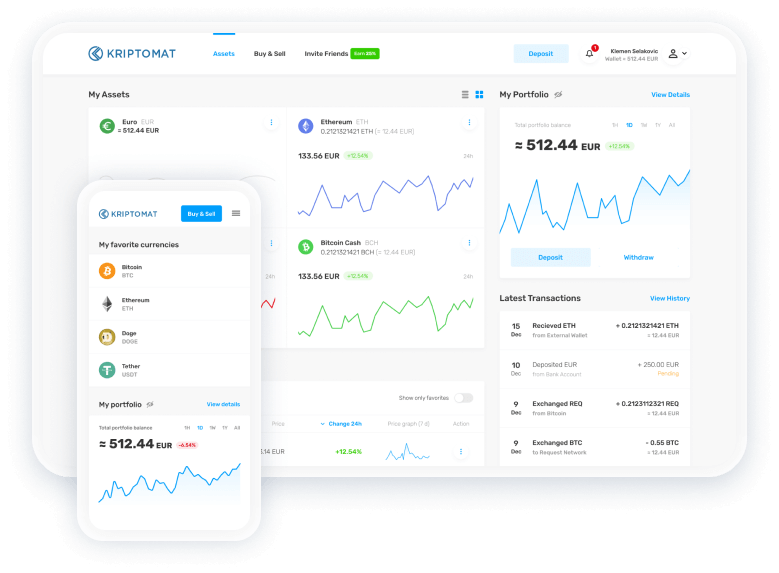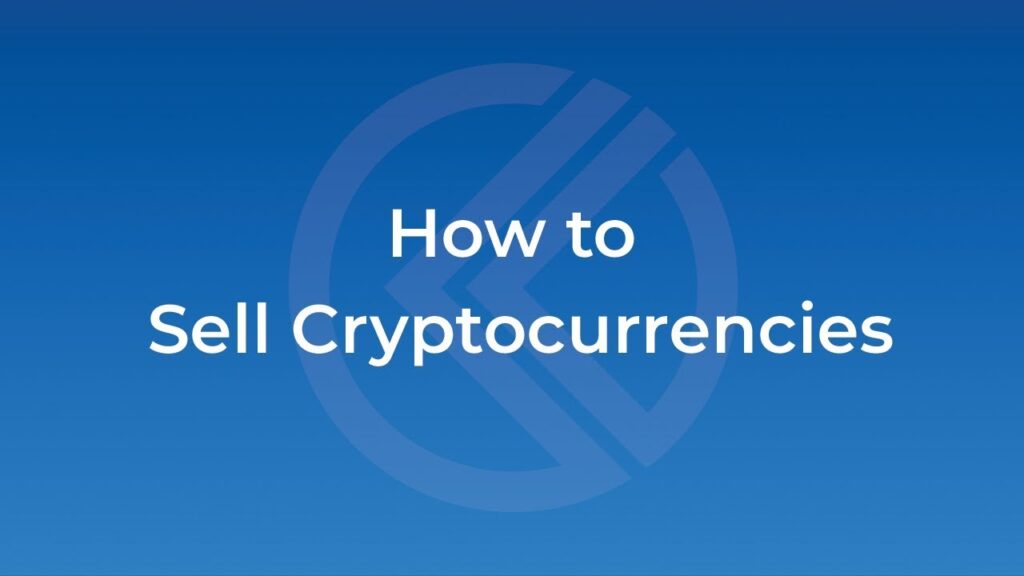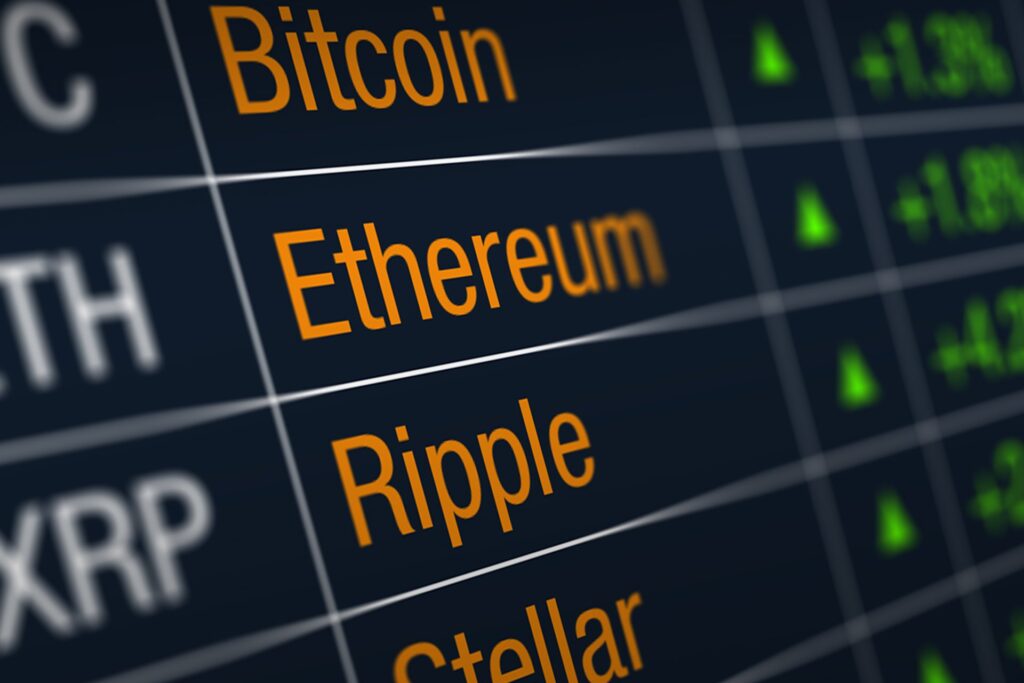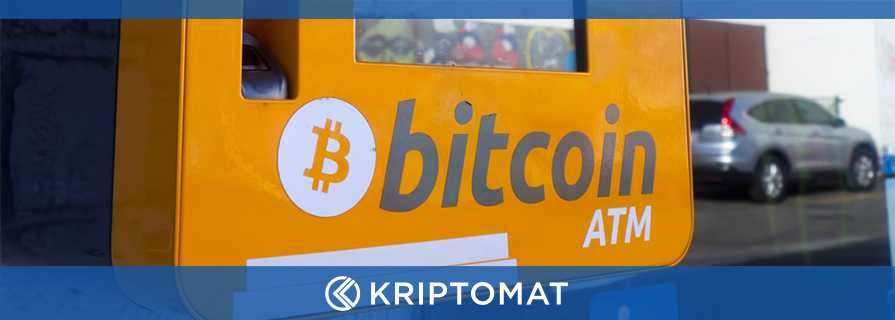Whether you’re a regular investor or you’ve received some Bitcoin as a gift, it can be tricky to sell your virtual assets. While the crypto community’s perpetual chants of “hodle!” echo sharply across the internet, sometimes it can feel like you’ve hodl’d long enough. It’s time you learned how to sell crypto – fast.
Why Sell?
There are many reasons why you’d want to sell your crypto. Between timing the market and raking in profits, there are a myriad of services available to trade in your cryptocurrencies for some hard cash. Some traders sell to reinvest in other assets. Others sell because they need the money – fast.
Regardless of whether you want it transferred to your bank account, converted to physical currency, or even exchanged for Amazon gift cards, seek and ye shall find. The blockchain space is filled with projects aimed at making the trading experience better, but the abundance of options can leave even experienced traders confused.

While there are multiple ways to trade in your cryptocurrencies, each has its own benefits and limitations, so it’s essential to have a goal in mind to get the most out of selling your assets. Also, make sure to read up on your region’s laws regarding exchanging cryptocurrencies for fiat currencies and its implications on your taxes.
What Do I Need Before I Can sell?
Selling is an art that, when done correctly, takes time. Your assets have value, and you don’t want to undersell them at any cost. This is far easier said than done, especially when you’re desperate to sell, but having all the tools at your disposal can make the whole process a lot less tedious.
If you plan on using an exchange to sell your tokens, remember to create an account and adhere to any KYC and AML protocols that may be in place for your region. It’s also important to make sure the token you’re selling is available for trade on the exchange of your choice.
If it’s just a few thousand tokens from an airdrop years ago, they likely aren’t worth anything anymore. Unless you’re planning on hitting up the nearest Bitcoin ATM, you’re also going to need a bank account to trade crypto for fiat. It may sound obvious, but there are ways to spend cryptocurrencies without needing a bank account. In some cases, it might even be a better option.
To sell any digital asset, you’ll need access to the wallet containing it. This includes knowing the wallet’s public address and its private key or seed phrase, generally a long string of randomized words. Whether it’s a hardware wallet or a software wallet, make sure you – and only you – have access to this seed phrase. It could be the difference between a small fortune and an expensive paperweight.
How To Sell Cryptocurrency
One of the first Bitcoin transactions ever made was made on May 22, 2010. Known globally as ‘Bitcoin Pizza Day,’ it is celebrated to remember the day Laszlo Hanyecz successfully bought two pizzas for 10,000 BTC – around $80 at the time. Hanyecz made the offer on a popular Bitcoin forum and finalized the deal privately with a British man.
Besides how delicious those pizzas were, considering they’d be worth $200 million today, Bitcoin’s value isn’t the only thing that’s grown since 2010. Spending cryptocurrencies is infinitely more straightforward than it was a decade ago, and the number of platforms available that allow you to sell digital assets has skyrocketed in the last few years.
Where To Sell Cryptocurrency
From direct trading to decentralized exchanges, crypto trading is a scorching hot topic, but the best approach isn’t always entirely obvious. Where centralized exchanges offer reliability, liquidity, and fast order-matching, peer-to-peer exchanges provide anonymity, decentralization, and more control over your assets. Neither approach is better for everyone; it depends on how much you know about blockchain technology versus whether you’d prefer a site to handle the tech details for you. It turns out that where to sell crypto is as important as when and how. Knowing how to buy and sell cryptocurrency is just the start.
Buyers vs sellers
Before the advent of money, humans used a ‘barter system’ to trade with each other. This introduced a concept called the ‘coincidence of wants,’ which required two people to have something the other wanted to trade for.
While a ‘medium of exchange’ or money has mostly resolved this problem, a trade can still only occur if two people come to an agreement. On exchanges, a matching engine sorts bids and asks from an orderbook to match traders up. Once the transactions go through, the orders are replaced by new ones before the next request is addressed.
On peer-to-peer exchanges, orders are matched online, but transactions are settled outside the platform. P2P Sellers usually mark up their offerings as they offer greater privacy. While this allows users to purchase and sell cryptocurrencies pseudo-anonymously, it isn’t the only way to transact in secret.
Modern decentralized exchanges (DEXs) use a slightly different method to match orders and determine asset prices. Instead of relying on a central orderbook, DEXs utilize liquidity pools that contain a set of tokens.

To buy or sell tokens from the pool, traders must contribute the corresponding token to the pool, and the asset prices are determined by the ratio of tokens in the pool. The use of these ‘Automated Market Makers’ or AMMs has boosted the DEX space forward in ways previously thought unimaginable, providing centralized exchanges with some much-needed competition.
Without the need for manual market makers and centralized order books, people can create surprisingly liquid decentralized trading platforms that incentivize liquidity providers and improve the crypto-economy as a whole. However, DEXs don’t come bundled without their flaws.
As decentralized platforms, there are no trusted entities to hold accountable when things go wrong. Considering how much capital transfer is involved in trading, this is a risk not many are willing to take. Further, DEXs only offer the decentralized trade of cryptocurrencies, and exchanging your assets for fiat will still require the use of centralized off-ramps.
Getting the Best Price
Depending on where you decide to sell your digital tokens, there are different ways to optimize your income. For regular exchanges, make sure to source your market price data from a reliable source and sell as high as possible. Use metrics like orderbook depth to determine where the market demand lies and ask a little higher.
It’s also vital to know how to use the ‘stop’ function when buying and selling on exchanges. Setting stop losses can save your capital from sudden market downturns and is an essential step to selling for the best possible price.
On peer-to-peer exchanges, your ability to sell will largely depend on your reputation as a seller. Marking down your premiums will get you a higher chance of a sale but brings in less money for your crypto. As you build a name for yourself as a seller on the platform, you can charge higher premiums for proven reliable service.

Another plausible yet impractical way to get better prices is through arbitrage. Exchanges determine spot prices based on supply and demand levels on their order books, but different exchanges measure different order books. This means that the price of Bitcoin on one exchange may be higher than that of another.
Some traders use this anomaly to their advantage. The price difference is usually not very high, and exchange transfer fees and other additional charges can cut into potential profits from this method. While it is perfectly legal, spot prices on different exchanges usually converge once knowledge of the arbitrage potential becomes public.
FAQ for Selling Crypto
How Do I Profit From Crypto Trading?
There are three essential rules to investing in cryptocurrencies: only invest what you can afford to lose, do your own research before investing, have a strategy to ‘buy low’ and ‘sell high’ (not the other way around!)
Thousands of altcoins in the space have crumbled to near-zero values, making them practically illiquid. Though a sudden infusion of cash into these markets could have significant effects, this isn’t the most practical way to generate money.
Some traders invest long-term, betting on the market’s growth over an extended period. Day traders, conversely, flip profits in the smaller movements on shorter time scales. Depending on your skill, experience, and risk averseness, both are viable strategies.
Spot markets aren’t the only place you can profit from cryptocurrencies. Derivatives are assets that derive their value from an underlying financial asset. In the case of crypto derivatives, the underlying asset is the cryptocurrency itself.
From futures and options to perpetual swaps, there are a number of different kinds of derivatives contracts with their own rules and systems. Though they are mostly used to hedge investments on the spot market, derivatives also offer ways to make large profits using a smaller investment with relatively lower risk.
Do I Need To Learn Trading?
There are those who consider trading to be an art, while the less-informed believe it’s the obsession of lucky people.
Regardless, it’s critical to learn the basics of swapping cryptocurrencies from one to another or selling back into fiat currency to cash out. With these simple skills you can maximize the profit potential from crypto investments.
Take time to learn how to read a price chart and figure out how things like volume, orderbook depth, and other technical indicators affect the asset’s price. Look for support and resistance levels to gauge where the market stops to observe. Find out how stop-loss orders work, and make sure to use them whenever possible to avoid preventable losses.
But trading involves a lot more than looking at screens of information. Relate price movements to past events to figure out what affects the asset’s value and what doesn’t – what it can and cannot recover from.
Selling as soon as you’re in the green brings in revenue faster, but playing the waiting game can yield more profit per investment. In an industry where assets grow exponentially fast, you neither want to sell too early nor too late.
When Should I Sell?
The crash that came soon after Bitcoin’s peak in 2017 saw its effects spread out over the first half of the following year. Through ups and downs, BTC oscillated lower and lower, repeatedly testing the $6,000 support to no avail.
In just two weeks between mid-November and early December, Bitcoin plummeted to $3,500, inciting fear, uncertainty, and doubt (FUD) into the minds of crypto investors worldwide. Of course, BTC would recover to over $12,000 by Q2 2019, but fearful traders could never have known this at the time.

No one can time the market perfectly, but it’s important to create a strategy for how you’re going to profit from cryptocurrencies before fully diving in. A prepared investor is a calm investor, and only a relaxed mind can tame the unpredictable waves of cryptocurrency markets.
How do I set targets?
It’s always useful to have a plan. Are you investing long-term or short-term? How much of your portfolio are you willing to invest? What are your goals for each investment? These are all crucial queries that need to be resolved before entering the world of crypto.
For short-term investments, make sure you’re ready to face the consequences of making the wrong call. Digital assets are incredibly volatile, and buying during a spike based on hype can be tempting but dangerous. Set small goals and work your way up to them, and adjust these goals accordingly.
In more long-term situations, the most challenging action can be to simply hold on. Bitcoin has recovered from apparently fatal crashes, but not every cryptocurrency is Bitcoin. A sinking ship can be a dangerous place to store your loot, and while a bigger ship may be on the horizon, jumping onto a lifeboat instead can sometimes be a more reasonable move to make.

The larger and longer you hold your investments, the more insight into the future you need. No one can truly predict the future, but it’s possible to draw conclusions. Look for events that could affect your investments in the future. Is an upgrade primed for launch? Perhaps the supply rate is halving. Is a famous brand planning to invest in cryptocurrencies?
Learning when to make the right move is as important as making the right move, and it’s paramount to create strategies that benefit your style of investment. Whether it’s long or short term, planning out your targets can be a powerful tool to tackle the nerve-racking space that is blockchain.
What price should I sell at?
While digital assets appreciate at rates unheard of in traditional markets, it’s vital to manage expectations. There are multiple reasons why you’d want to sell at a certain price point. However, If an asset’s value drops, selling before the bottom could significantly help you cut losses, but some traders also sell at the top just to buy back the bottom.
This is known as ‘short-selling,’ when a trader sells an asset only to use the funds to reinvest in the asset later at a lower price. $100 is worth a lot more when Bitcoin is at $3,500 than at $10,000, and many traders use this method to grow their portfolio over time.
At times, liquidity can be an issue with cryptocurrencies, creating slippage for large buy and sell orders. Though this problem will fix itself in time, as more people invest in the space and encourage more trading, it’s still something to keep in mind when investing in greater quantities.
Bitcoin’s upside potential is infinite, with no real ceiling to how valuable it could become. Blockchain is showing up on institutional investors’ radars, and as more money enters the ecosystem, the more valuable its products and services will become.
Learn more about the industry, and really get a feel for how much you think it’ll be worth. A bankless future than runs on a decentralized economy. What’s the perfect price to sell at? There’s only one way to find out.
How Much Should I sell?
A risk-averse investor ensures his portfolio is sufficiently diverse so it can withstand the losses of one asset through the gains of another. Some assets are more unpredictable than others, but even if you could time the market perfectly, it’s never a good idea to sell all of your holdings in an asset at once.

As mentioned earlier, with larger sell orders, slippage in low liquidity markets can cost you a pretty penny if you aren’t careful. This can be avoided by learning how to set up stop losses while trading and analyzing orderbook data before setting up orders.
During a bear market, exiting the asset entirely might seem like common sense.
However, by selling a portion of your investment, you could reinvest at a lower price, thereby increasing your holdings when the market eventually (hopefully) flips back up.
Even when selling, it can be advantageous to go in with a plan. Fear can make you act in ways you wouldn’t ordinarily behave and hamper your decision-making in ways that aren’t always evident. Don’t sell because you’re worried; sell with purpose.
What Signals Should I Look Out For?
Countless things can affect the value of a digital currency. With how small the industry is and its relatively low liquidity, even a single news article can create dramatic movements in cryptocurrency spot prices. Twitter is filled with people either hyping up or spreading FUD about various blockchain-based projects in an attempt to influence the market.
Market sentiment is usually a strong indicator of future price movement, but fickle markets create fickle opinions. Only a strong understanding of blockchain and trading fundamentals can help filter out the noise. Technical indicators may be statistically accurate, but remember to take its warnings with a grain of salt and the context of the economy surrounding it. Signals don’t move markets – markets do.
What Do I Do With the Profits?
Reinvest! Wealth accumulation is a slow and continuous process that takes years of disciplined investments. Reinvesting your profits into the ecosystem doesn’t just grow your portfolio — it improves the crypto economy as a whole.
Blockchain was created to facilitate decentralized money, and investing in the space contributes to its development. This benefits crypto investors in the long-run, and also ensures steady and measurable growth, which leads to consistent, impactful progress that makes the technology more valuable.
As an investor in cryptocurrencies, creating a thriving market is in your best interests, and regardless of whether you’re a day trader, a casual enthusiast, or even a venture capitalist, the best investment you can make is in yourself.
Can I Spend My Cryptocurrencies Without Converting Them?
A few years ago, various peer-to-peer exchanges noticed that people in China were spending Bitcoin to purchase iTunes gift cards from the United States. These gift cards allowed people in China to access western media on the iTunes store, a kind of loophole around the nation’s ‘Great Firewall.’
Where there’s demand there will be a supply, and at the moment, Bitcoin is very much in demand. Whether you’re shopping for Amazon gift cards or just topping up your Google Play balance, there are countless services available that let you trade your cryptocurrencies for platform-specific vouchers.
Bypassing national media restrictions aside, people sell gift cards for a variety of reasons. Some even buy them as a speculative investment, hoarding them at a discount and selling them at market prices or higher. Some e-commerce websites even accept stablecoins as a form of payment, allowing you to stay within the realm of cryptocurrencies while buying at regular fiat prices.
What Is a Gas Fee?
Cryptocurrencies may not require a centralized third-party, but there’s still a cost to validating transactions. When a user runs a smart contract, code is deployed to the blockchain, which requires miners to run and compile computations in a decentralized environment.
To cover the cost of computation, users must pay a ‘gas fee’ that pays the network for its computation power. Gas fees are usually quite small, making transactions relatively cheap compared to fiat transfers. However, gas fees can become quite expensive, especially during times of network congestion.
Gas fees incentivize miners, and paying more gas can sometimes get your transaction validated faster. A fantastic resource for keeping track of live gas prices is ETH Gas Station. When selling digital assets on peer-to-peer or decentralized exchanges, it’s important to note this additional fee and ensure you aren’t spending too much on selling.
What Other Fees Might Apply?
Exchanges charge a fee for every trade made on the platform, but that isn’t the only fee involved. Between maker and taker charges, withdrawal fees, and wallet transfer costs, there are a few things going on behind the scenes when selling on an exchange.
Maker and taker fees pay a rebate to liquidity providers or ‘market makers’ on the exchange. When traders stimulate trading activity by ‘making’ orders, they are paid for the service by those who ‘take’ the order.
If you’re buying with or selling for fiat currencies, look out for deposit and withdrawal fees. These are fees incurred by the exchange’s on-ramp to relay information to and from your bank, and while it’s usually cost-effective for larger amounts, it can take a chunk out of smaller investments.
What are Bitcoin ATMs?
If you’re trying to get your hands on some physical currency ASAP, Bitcoin ATMs are your best friend. Just like regular ATMs, Bitcoin ATMs dispense cash, with some of them even issuing multiple fiat currencies.
These machines are connected to the blockchain and comprise a few components like a monitor, a QR code scanner, and a bill acceptor/dispenser. Upon entering your personal information and wallet address, the Bitcoin ATM will dispense cash after receiving Bitcoin from your address. Bitcoin ATMs can also be used to purchase cryptocurrencies with physical currency.

Once cash is placed in the bill acceptor, the machine will send the specified amount to your address. Bitcoin ATMs are useful for a variety of reasons, but chief among them are privacy and convenience. These machines are used by a number of people and are usually placed in public areas like malls, airports, and hotels, giving users the anonymity of the crowd.
However, most Bitcoin ATMs do still request your phone number to verify identity, and while this does offer a degree of anonymity, it’s far from entirely private. As far as selling cryptocurrencies go, Bitcoin ATMs are one of the most convenient ways to exchange your digital assets for fiat money.
Depending on your needs, hundreds of options are available to trade your tokens for money in the bank. Selling any digital asset is relatively straightforward, but it takes nuance to sell efficiently and profitably on a consistent basis.
NOTE
This text is informative in nature and should not be considered an investment recommendation. It does not express the personal opinion of the author or service. Any investment or trading is risky, and past returns are not a guarantee of future returns. Risk only assets that you are willing to lose.




 IOS
IOS Android
Android